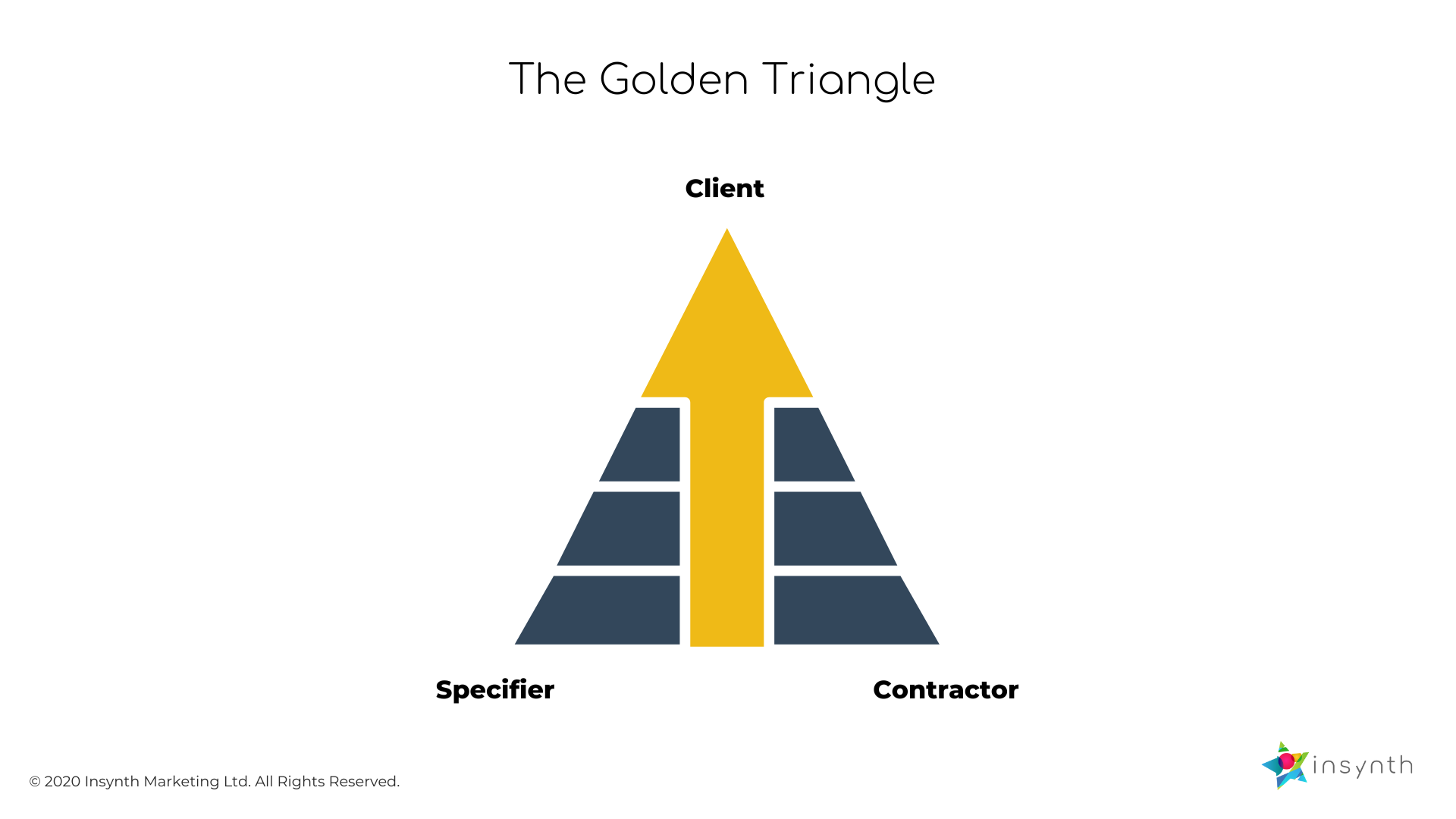
One of the most frustrating things that can happen for a building-product manufacturer is to lose out on a big sale to inferior products.
Why does this happen? And how can you prevent it?
Unfortunately, this scenario is all too common for brands. Many architects, their clients, developers or contractors sacrifice quality — knowingly or not — for various reasons during the design and specification process.
Learn the key reasons why your products could be at risk.
1. Disorganised Product Information
We’ve discussed the value of being knowledgeable about your product and using that insight to become a helpful resource to architects.
However, If your product information is disorganised and unclear, it can just be as unhelpful as having nothing at all.
According to the Construction Marketing Index, 97% of architects in 2021 used manufacturers’ websites to gain ideas and product information for upcoming projects.
Ensure your product and technical info is organised in a logical and easy-to-find manner.
Don't gate product data behind forms (this does not sit well with architects).
Keep page layouts simple and make links to supporting information clear. Better still, keep relevant technical data on the same page as case studies, blogs, photo galleries to make the users experience better.
Consider including content such as:
- Technical drawings
- Test certificates
- High-quality photography of your products in use
- Warranties and product guarantees
- Specification clauses
To name a few.
Your overall goal should be to make the buying journey for your architects and specifiers hassle-free, without the need to jump from page to page on your website. Or even having to speak to a representative for your business.
2. Overcoming Price As An Objection
As highlighted in our article on “How to Talk About Pricing With Architects”, cost is one of the primary reasons your product might miss out in favour of another brand.
Many manufacturers fall into the trap of lowering their prices to remain competitive. Engaging in a “price war” with competitors is not a good long-term strategy.
Instead, aim to highlight the added benefits that make your product better value for money during its life cycle. Is your product:
- More energy efficient
- Sustainable/recyclable
- Made within the UK
- On shorter lead times
- designed for a longer service life
Specifiers and clients want to understand the full life cycle cost, and the cost of maintenance and decommissioning.
Be clear and transparent about expected costs. Nothing is more frustrating than having to rewrite specification because the product cost exceeds the project’s budget. If you are never going to win a job because it's always going to be too expensive, then why kid yourself into thinking you will be misleading decision makers about price.
And whilst the goal is to sell your products to architects and specifiers alike, the trust you build when being open about the long-term value of your products will be much more rewarding. You may even find a stream of quality sales leads begin to flow through after having a few of these encounters.
The actual value of each building product lies in its cost at the beginning, middle and end of a building’s life. It is vital to emphasise this fact during your conversations with architects. They will realise that inferior products are not always the cheapest option.
3. Limiting Your Audience
The idea for a project may come from an architect, and specifiers help choose the materials used. The last say on product choice may fall into the hands of a contractor, who can break the specification just like THAT!
When promoting your building product, you want to ensure you cover all your audiences. The architect you’re working with could like how sustainable your product is. Yet, the contractor can swap your product for one of lesser quality because it’s cheaper.
Unless you include the contractors in the specification process, they will not understand your product’s benefits over an inferior product.
This refers to the “Golden Triangle” idea, where there is more than one party in the specification/buying process.

This idea ensures that all parties are on the same page when deciding on your product—creating a more productive process for everyone. You will have a much better chance of winning over a client if you speak to those involved in the construction and installation process.
4. Deliver a fantastic customer experience
Perhaps the worst reason for a manufacturer to lose out to an inferior brand is one that is so easy to fix: lousy communication.
Brands that don’t communicate quickly or clearly enough with their customers tend to lose out — Architizer’s data shows that sales reps who responded to an architect’s enquiry within the first 24 hours were 86% more likely to have their product shortlisted for a project than those coming a day later.
Simply put, time-strapped architects appreciate brands that respond swiftly to their enquiries.
This is simple customer experience stuff.
We don’t suggest you sit next to your laptop, waiting for the next enquiry to drop into your inbox. But be punctual and understand how important it is to get back to specifiers promptly.
The Construction Marketing Index reports that 22% of architects are happy to wait between 1 to 4 hours for a response from a manufacturer. 25% stated they are happy to wait between 4 and 8 hours.
How much work could you be losing by not responding quickly enough to technical or pricing enquiries?
It would help if you also considered how your architects can get in contact with you. Great customer experience comes with creating a streamlined process with minor hiccups that could prevent your client from meeting their goal.
- Are your company’s email and telephone numbers easy to find on your website?
- Do people have to navigate an automated switchboard? Could a direct line for technical or sales help the customer?
- Do you have regional reps? Are their contact details easily found on your website?
- Would architects need to make enquires if you provided them with the correct technical information in the first place?
Excellent customer experience is key to winning business. You will soon find your brand being considered alongside your competitors if you are reliable, communicative and informative with them consistently.
At that point, the superior quality of your products can do the rest of the work and help get you specified.
Conclusion
We’ve identified a few key reasons you might lose out to inferior products. So the next step for you is to plan ahead.
We recommend you book some time to talk with an architect (pay them if you must) and walk through your website.
- How is the overall experience using your website? Is all the information that they need provided?
- If not, what could you include to provide more help?
- Can they identify all contact details quickly?
The more feedback and advice you can get, the better. Remember, these are the individuals you are trying to market your products to. They will know what they want to see and experience.
If you’ve received recommendations to make minor changes to your website, you’re in luck. This means you’re on the right track for your products to be chosen for more projects. However, if you’ve received more negative feedback with recommendations for significant changes to your site, you will need to consider changing your whole website.
Fortunately, plenty of agencies will work with you to create a new website for your building products. An agency that specifically works in the construction sector will automatically know how to cater your website to architects and specifiers alike.
Just like us!
You can view our website services here.
About Insynth
At Insynth we deliver a predictable flow of leads, customers, and specifications for building product brands through our inbound marketing approach, proven to reach a technically demanding audience.
We use the latest marketing techniques such as construction inbound marketing, to equip building product companies to grow sustainability in this era of digital transformation.
As the only HubSpot certified agency to major in construction marketing. We have a proven formula of bringing a variety of functionalities together including CRM Implementation, Web Design, Sales Automation, SEO, and Email Marketing to achieve your ultimate aim: Growing your business and gaining new specifiers and customers.

